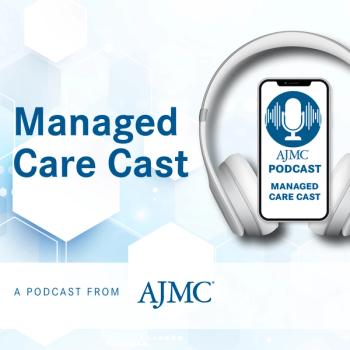
Advancing Cancer Care Through Technology, Provider-Pharmacist Collaboration: Scott Soefje, PharmD, MBA, BCOP
Artificial intelligence, automation, and expanded pharmacist roles help reduce administrative burdens, improve workflow, and support providers in delivering cancer care, according to Scott Soefje, PharmD, MBA, BCOP.
He adds that, as cancer cases rise and the workforce shrinks, oncology pharmacists can help support overextended providers by managing appropriate patients and improving workflow efficiency.
Watch parts
This transcript has been lightly edited; captions were auto-generated.
Transcript
With technology and payer limitations complicating cancer care, what strategies or solutions have been most effective in addressing these barriers?
Technology can be a double-edged sword, right? I think where technology ultimately is going to play a role is, what are those repetitive tasks that are administrative in nature, that technology, particularly AI or something, can take over and free the clinicians up to do more direct patient care? No clinician likes to sit down and figure out whether a drug is going to get prior authorization. No clinician likes to sit down and fill out the paperwork for patient assistance programs and all those kinds of things. To me, that's where AI is going to step in.
What I'm worried about is, do we see AI on the other side looking at the application, and because it doesn't have certain keywords, automatically rejects the authorization? I think we have to make sure that we're sitting down and partnering with payers, pharma, whoever we're dealing with, to make sure those systems are communicating the information that we need to go back and forth. There needs to be some human interaction when the system breaks down and it doesn't work.
Where technology, I think, is really going to play a role, we've installed a compounding robot that mixes chemotherapy. Our goal is, at some point in the near future, that no human hand touches chemotherapy because of the safety concerns of handling hazardous drugs. I think we can get there in that type of situation.
The other question is, can we expand the role of our pharmacy technicians, using that technology, maybe some AI technology, so that we then free the pharmacists up from doing some of that mundane dispensing-type work and send them out to do more clinical practice? Those are the things I think we're going to see moving forward as we go.
What do you see as the biggest workforce or operational challenges over the next 3 to 5 years, and where do oncology pharmacists have the greatest opportunity to add value?
One of the biggest workforce challenges is going to be that, 1, we have a shortage of oncologists in this country. My understanding is that we also have a shortage of advanced practice providers and oncology nurses. Now, unfortunately, we also have a shortage of oncology pharmacists, but if we can get those training programs up and going, maybe it's not so bad.
What we find that the pharmacist can really do in the clinic is take some of those burdens off the providers to allow them to see more patients during the day. What we're facing is this perfect storm: a growing population and a growing number of cancer patients in a dwindling workforce. I think the pharmacist has got the perfect opportunity to step in and say, "This patient I can manage. Let me manage this patient. You go handle that patient over there. They're sicker, more complex, and need your level of skill."
So, how do we integrate that across the whole spectrum? How do we do the things that we do well as pharmacists and reduce the phone calls from the infusion center because we've entered the treatment plan correctly, reduce the phone calls from the pharmacy because we dose-adjusted appropriately? All of that saves time for the clinic and makes the clinic more efficient. That's, I think, the biggest role of pharmacists over the next several years.
Newsletter
Stay ahead of policy, cost, and value—subscribe to AJMC for expert insights at the intersection of clinical care and health economics.













































